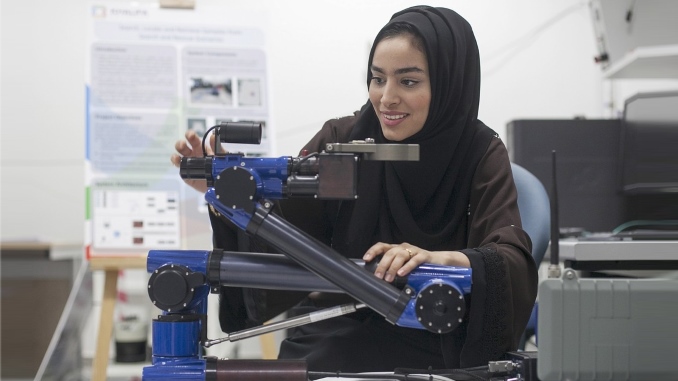
The merge of numerical control and remote manipulation created a new field of engineering, and with it a number of scientific issues in design and control which are substantially different from those of the original technologies have emerged.
Robots, Not a Normal Machine
Robots are required to have much higher mobility and dexterity than traditional machine tools. They must be able to work in a large reachable range, access crowded places, handle a variety of work-pieces, and perform flexible tasks. The high mobility and dexterity requirements result in the unique mechanical structure of robots, which parallels the human arm structure. However, this structure significantly departs from traditional machine design. A robot mechanical structure is basically composed of cantilevered beams, forming a sequence of arm links connected by hinged joints. Such a structure has inherently poor mechanical stiffness and accuracy, hence is not appropriate for the heavy-duty, high-precision applications required of machine tools. Further, it also implies a serial sequence of servoed joints, whose errors accumulate along the linkage. In order to exploit the high mobility and dexterity uniquely featured by the serial linkage, these difficulties must be overcome by advanced design and control techniques.
Robot Behaviour
The dynamic behaviour of robot manipulators is also complex, since the dynamics of multi-input spatial linkages are highly coupled and non-linear. The motion of each joint is significantly affected by the motions of all the other joints. The inertial load imposed at each joint varies widely depending on the configuration of the manipulator arm. Coriolis and centrifugal effects are prominent when the manipulator arm moves at high speeds. The kinematic and dynamic complexities create unique control problems that are not adequately handled by standard linear control techniques, and thus make effective control system design a critical issue in robotics.

Interacting with the Environment
Robots are required to interact much more heavily with peripheral devices than traditional numerically-controlled machine tools. Machine tools are essentially self-contained systems that handle work-pieces in well-defined locations. By contrast, the environment in which robots are used is often poorly structured, and effective means must be developed to identify the locations of the work-pieces as well as to communicate to peripheral devices and other machines in a coordinated fashion.
Robots are also critically different from master-slave manipulators, in that they are autonomous systems. Master-slave manipulators are essentially manually controlled systems, where the human operator takes the decisions and applies control actions. The operator interprets a given task, finds an appropriate strategy to accomplish the task, and plans the procedure of operations. He/she devises an effective way of achieving the goal on the basis of his/her experience and knowledge about the task. His/her decisions are then transferred to the slave manipulator through the joystick. The resultant motion of the slave manipulator is monitored by the operator, and necessary adjustments or modifications of control actions are provided when the resultant motion is not adequate, or when unexpected events occur during the operation. The human operator is, therefore, an essential part of the control loop. When the operator is eliminated from the control system, all the planning and control commands must be generated by the machine itself.
Control Processes
The detailed operations procedure that a robot follows must be set up in advance, and each step of motion command must be generated and coded in an appropriate form so that the robot can interpret it and execute it accurately. Effective means to store the commands and manage the data file are also needed . Thus, programming and command generation are critical issues in robotics. In addition, the robot must be able to fully monitor its own motion. In order to adapt to disturbances and unpredictable changes in the work environment, the robot needs a variety of sensors, so as to obtain information both about the environment (using external sensors, such as cameras or touch sensors) and about itself (using internal sensors, such as joint encoders or joint torque sensors). Effective sensor-based strategies that incorporate this information require advanced control algorithms. But they also imply a detailed understanding of the task.
